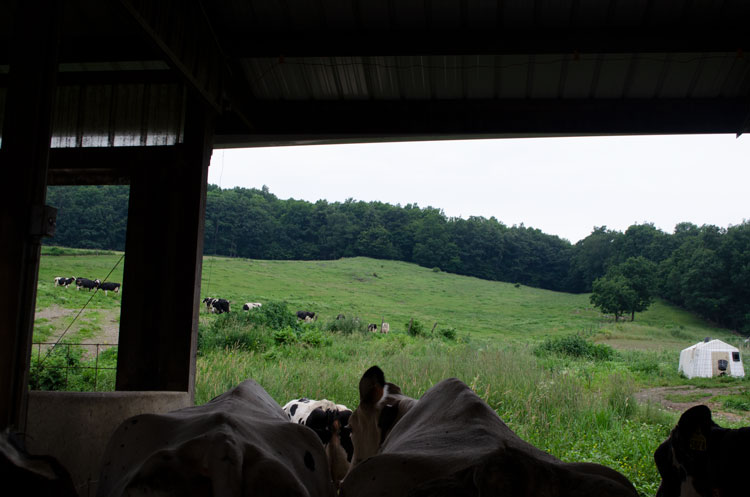
With warming weather and spring rains, more farms are able to let their animals out onto green pastures after a long winter. Though exciting, it may be easy to fall back into some less-than-ideal grazing plan habits. For optimum health of both cattle and plants, Extension Specialist Amanda Grev shared five grazing mistakes to avoid in a Maryland Milk Moos newsletter.
Not knowing the plant’s needs
Understanding how different species store energy reserves is key to making sure a pasture isn’t overgrazed and can recover and regrow. Grev compared legumes like alfalfa, which store energy below ground and can persist at a lower grazing height, to cool-season grasses like orchardgrass, which store their reserves in the base of the stem and need at least 3 to 4 inches of postgrazing height to recover. Pay attention to grazing heights and rest periods when making your plan, she advised.
Utilizing forage unevenly
As pastures are grazed more heavily in certain areas, forage will become overgrazed in some spots and mature — declining in nutritional value — in others. In order to improve usage uniformity and promote greater long-term productivity, Grev recommends providing water and shade in less desirable parts of the field, mowing or clipping low-use areas to keep plants vegetative, and dividing the pasture into smaller sections.
Neglecting soil fertility
Grev recognizes that in a pasture setting, a large portion of nutrients are retained and recycled through manure. However, she reminds that, “They may not always be deposited evenly across the pasture.” Also, soils will naturally become more acidic over time. Therefore, soil sampling is still a best practice to know if any lime or fertilizer is necessary to keep fields productive and healthy. The pasture and forages specialist also notes that rotational grazing can be part of the solution to more evenly distribute manure.
Being too rigid with grazing plans
“Good managers have to allow for flexibility and adaptive management in grazing systems to achieve desired outcomes,” Grev wrote. Depending on growing conditions, that might mean adjusting stocking rates, changing the rotational frequency/order, or supplementing pasture with other forage sources.
Failing to keep good records
Variable growth rates and animal consumption patterns can make it challenging, but Grev advises that keeping track of forage production and timing of grazing and resting periods will allow you to make a more accurate grazing plan for the next year. A picture of how the year went will help assess what your system’s limitations are and be better prepared for possible weather-related issues to ensure you have enough forage for the year. A number of charts, online tools, and smartphone apps are available to help develop a grazing plan, Grev recommended.








